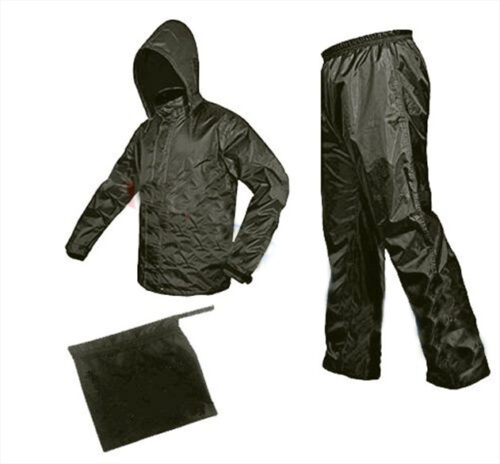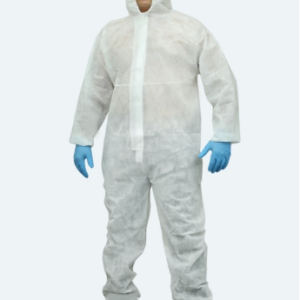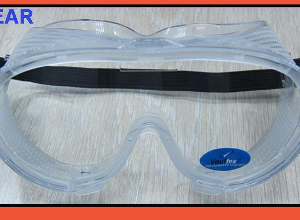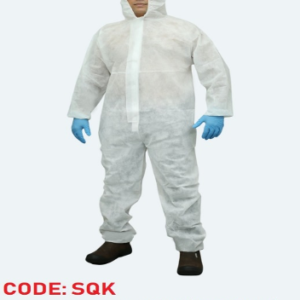Rain coat top and down
- Brand: AZ safety
COAT is an outer garment worn to provide warmth and protection against the elements, typically extending from the shoulders to varying lengths below the hips. Coats are designed in diverse styles, materials, and functionalities to suit different climates, fashion preferences, and practical needs. They serve as essential apparel for both formal and casual occasions, offering insulation, weather resistance, and style.
### Types and Styles of Coats:
1. **Overcoat**: A classic outerwear piece worn over suits or formal attire, typically knee-length or longer, made from wool, cashmere, or blends. Overcoats offer warmth and sophistication, often featuring notched lapels, button closures, and deep pockets.
2. **Trench Coat**: Originally designed for military use, trench coats are water-resistant garments made from cotton gabardine or synthetic fabrics. They are characterized by a double-breasted front, shoulder epaulets, belted waist, and storm flaps for rain protection.
3. **Pea coat**: A double-breasted coat with a shorter length, originally worn by sailors, made from heavy wool or wool blends. Pea coats feature broad lapels, large buttons, and vertical pockets, offering warmth and a tailored silhouette.
4. **Parka**: A hooded, insulated coat designed for extreme cold weather, often featuring a water-resistant outer shell, down or synthetic insulation, and fur or faux fur trim around the hood. Parkas provide superior warmth and protection in Arctic conditions.
5. **Down Coat**: Insulated with duck or goose down feathers, down coats offer lightweight warmth and compressibility. They are suitable for cold climates and outdoor activities, featuring quilted patterns to prevent insulation from shifting.
6. **Raincoat**: A waterproof coat made from rubberized fabric, PVC, or waterproofed cotton, worn to protect against rain and moisture. Raincoats may include hoods, snap or zip closures, and sealed seams for weatherproofing.
7. **Windbreaker**: A lightweight, wind-resistant coat made from nylon or polyester, designed for protection against wind chill during outdoor activities. Windbreakers often feature elastic cuffs, adjustable hoods, and packable designs.
8. **Fur Coat**: A luxury outerwear garment made from animal fur, providing exceptional warmth and insulation. Fur coats are associated with elegance and are available in various fur types, lengths, and styles.
### Components and Features of Coats:
1. **Materials**: Coats are crafted from a wide range of materials, including natural fibers such as wool, cashmere, and fur, as well as synthetic fabrics like nylon, polyester, and Gore-Tex®. The choice of material influences warmth, water resistance, breathability, and durability.
2. **Insulation**: Insulated coats may feature natural down feathers or synthetic fills such as polyester or Prim aloft® to provide warmth without excessive bulk. Insulation type determines thermal efficiency and performance in cold weather conditions.
3. **Lining**: Coats may include linings made from silk, polyester, or fleece to enhance comfort, facilitate moisture management, and improve insulation properties. Lining materials affect warmth, breathability, and overall garment weight.
4. **Closure Systems**: Coats feature various closure systems, including buttons, zippers, snaps, toggles, or hook-and-loop fasteners, providing secure closure and protection against wind, rain, and cold. Double-breasted coats offer additional coverage and style.
5. **Collar and Neckline**: Coats may have stand-up collars, hooded designs, or traditional lapels to provide neck protection and insulation. Adjustable collars and hood drawstrings enhance weather resistance and wearer comfort.
6. **Pockets**: Functional pockets in coats serve as storage for personal items, accessories, and hand warming. Coat pockets may be welted, flap-covered, zippered, or lined with fleece for added warmth and convenience.
7. **Cuffs and Hem**: Adjustable cuffs with snap or Velcro® closures and elasticized hems help seal out cold air and moisture, enhancing thermal efficiency and wearer comfort during inclement weather.
8. **Ventilation and Breathability**: Breathable coats incorporate ventilation features such as underarm vents, mesh linings, or back vents to regulate body temperature and moisture, ensuring comfort during physical activities.
### Advantages of Coats
Coats offer several advantages that make them indispensable garments for warmth, protection, and style in diverse climates and environments:
1. **Weather Protection**: Coats provide insulation, wind resistance, and water repellency to shield against rain, snow, wind chill, and cold temperatures. They keep wearers warm and dry in inclement weather conditions.
2. **Versatility**: Coats are versatile outerwear suitable for formal and casual occasions, work environments, outdoor activities, and travel. They accommodate different fashion preferences, climates, and functional requirements.
3. **Warmth and Insulation**: Insulated coats with down feathers or synthetic fills offer lightweight warmth and thermal efficiency without adding excessive bulk. They provide comfort and protection in cold weather climates.
4. **Style and Fashion**: Coats contribute to personal style and fashion statements, enhancing professional attire, casual outfits, and evening wear. They are available in a variety of colors, patterns, and designs to complement individual preferences.
5. **Durability and Longevity**: High-quality coats made from durable materials such as wool, cashmere, or synthetic fabrics are resistant to wear, pilling, and fading. Proper care and maintenance ensure longevity and investment value.
6. **Comfort and Fit**: Well-designed coats with ergonomic features, adjustable closures, and breathable linings offer comfort, mobility, and a customized fit. They accommodate layering and movement during daily activities and outdoor pursuits.
7. **Protection Against Elements**: Coats protect against environmental elements such as rain, wind, snow, and cold air, maintaining wearer comfort and health. They reduce the risk of weather-related illnesses and discomfort.
8. **Professional Appearance**: Tailored coats with structured silhouettes and refined details project a polished and professional image in business settings, client meetings, and formal events. They convey confidence, style, and attention to detail.
### Importance of Coats
The importance of coats is underscored by their practical benefits, functional versatility, and role in providing warmth, protection, and style in everyday life:
1. **Cold Weather Comfort**: Coats are essential for maintaining warmth and comfort during cold weather seasons, protecting against hypothermia, frostbite, and cold-related health issues. They support outdoor activities and commuting in winter climates.
2. **Seasonal Adaptability**: Coats adapt to seasonal changes, offering lightweight styles for transitional weather and insulated designs for winter. They facilitate layering with sweaters, scarves, and accessories to adjust to fluctuating temperatures.
3. **Health and Well-being**: Wearing coats in cold or inclement weather promotes health and well-being by preventing temperature-related illnesses, maintaining body heat, and preserving energy levels during outdoor activities.
4. **Personal Safety**: Coats with reflective elements or bright colors enhance visibility and safety during low-light conditions, evening walks, cycling, and outdoor adventures. They reduce the risk of accidents and improve wearer visibility to others.
5. **Environmental Protection**: Coats protect against environmental pollutants, allergens, and airborne particles encountered during outdoor activities, commuting, and urban living. They create a barrier against pollutants and irritants in the air.
6. **Fashion and Style**: Coats contribute to personal style and self-expression, enhancing wardrobe versatility and fashion statements. They complement outfits for work, leisure, travel, and special occasions, reflecting individual tastes and trends.
7. **Workplace Dress Codes**: Coats adhere to workplace dress codes and professional standards in business environments, corporate settings, and formal occasions. They project professionalism, credibility, and adherence to attire guidelines.
8. **Cultural and Social Significance**: Coats hold cultural significance and social symbolism, reflecting regional traditions, climate adaptations, and historical fashion trends. They preserve cultural heritage and identity through traditional outerwear styles.
### Uses of Coats
Coats serve a multitude of practical purposes and applications in everyday life, work settings, recreational activities, and special occasions:
1. **Daily Wear**: Worn as everyday outerwear for commuting, running errands, and outdoor activities to protect against weather elements and maintain comfort throughout the day.
2. **Work Attire**: Essential for professional dress codes in offices, business meetings, client interactions, and corporate environments, projecting a polished and professional appearance.
3. **Outdoor Recreation**: Used for hiking, camping, skiing, snowboarding, and outdoor adventures to provide warmth, weather protection, and comfort during recreational pursuits.
4. **Travel and Exploration**: Packed as travel essentials for business trips, vacations, and sightseeing tours to adapt to different climates, weather conditions, and cultural destinations.
5. **Special Events**: Chosen for formal events, weddings, ceremonies, and gala dinners to complement formal attire, evening wear, and celebratory occasions.
6. **Sports and Activities**: Worn as sports outerwear for spectators, coaches, and participants in outdoor sports, stadiums, and sporting events, offering warmth and spectator comfort.
7. **Fashion Statements**: Styled as fashion outerwear for fashion enthusiasts, trendsetters, and influencers to showcase personal style, seasonal trends, and designer collections.
8. **Uniforms and Workwear**: Provided as uniforms for hospitality staff, healthcare professionals, security personnel, and service industries to ensure comfort, professionalism, and adherence to dress codes.
### Conclusion
In conclusion, coats are essential outerwear garments designed to provide warmth, protection, and style across diverse climates, seasons, and activities. Their insulation, weather resistance, and fashion versatility make them indispensable apparel for everyday wear, professional settings, outdoor adventures, and special occasions.
By offering comfort, weather protection, and aesthetic appeal, coats enhance personal well-being, promote workplace professionalism, and accommodate various lifestyles and preferences.
Only logged in customers who have purchased this product may leave a review.
Please Login To Download Attachment
General Inquiries
There are no inquiries yet.










Reviews
There are no reviews yet.